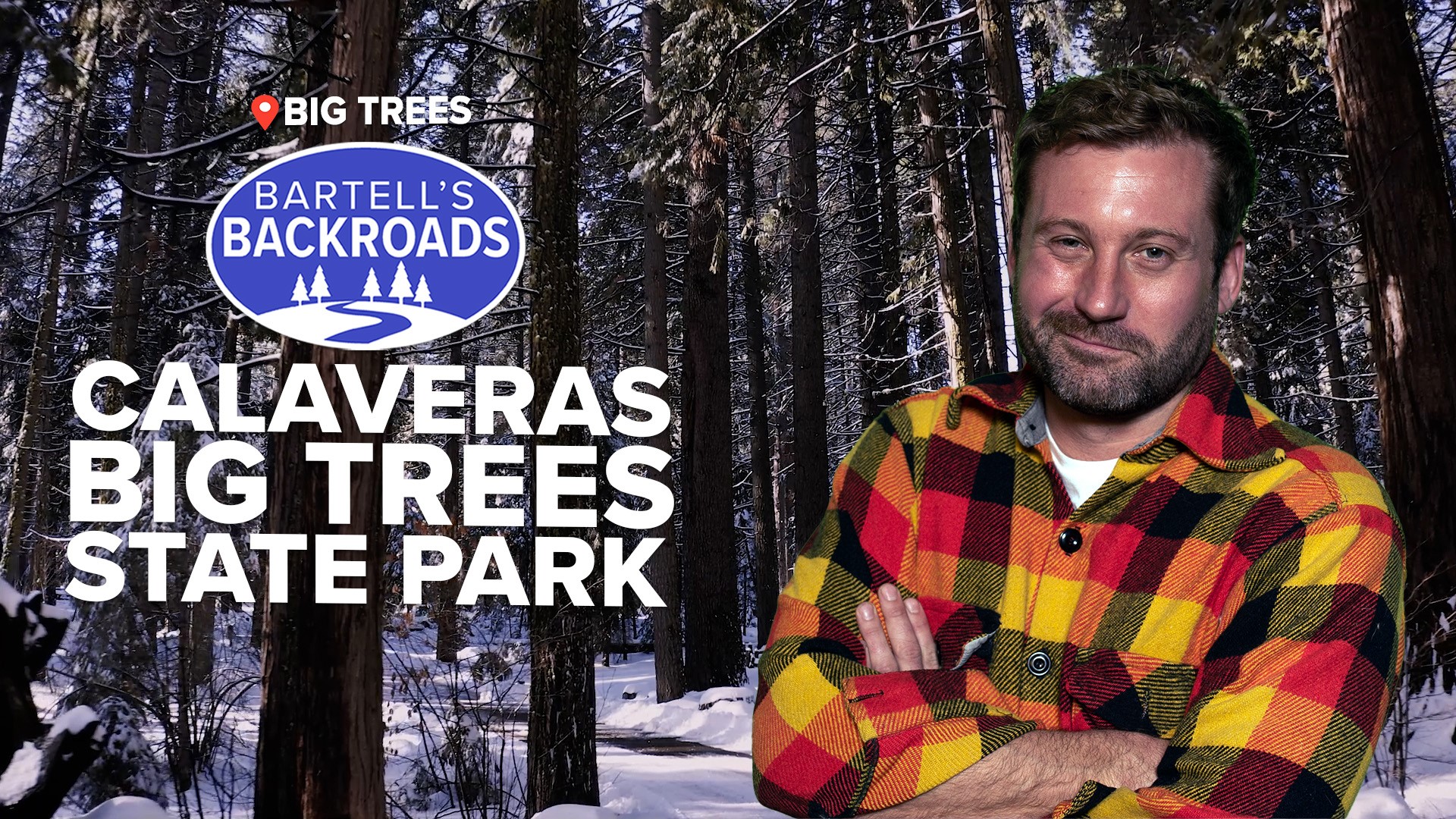BIG TREES, Calif. — Season after season, year after year the giants in Calaveras Big Tree State Park were free to grow, and largely left undisturbed by man. That all changed in the spring of 1852 when Augustus T. Dowd stumbled upon the giants while tacking a wounded grizzly bear.
“He came across this tree, he was the first one to persuade people to come up and see it for themselves," says California State Parks Interpreter Lillie Oravetz. "They saw it, word spread."
For more than 170 years tourists have traveled to what is now Calaveras Big Tree State Park to experience the giant sequoias for themselves.
“This is technically the longest-running tourist attraction in California,” says Oravetz.
Whether you are in snowshoes or hiking boots the 1.7-mile walking trail doesn’t disappoint.
One of the first trees you will encounter is one of the park's largest sequoias, the Empire State Tree, which is only 250 feet tall but very wide.
“It is about 30 feet across in the bottom, in diameter, but the real key for bigness for giant sequoias is just how wide it stays. And if you look to the very top of this tree, you can see that it stays pretty wide as you go up for quite a ways,” says Oravetz.
Sequoias are the largest by volume in the world but not the tallest. That title goes to the sequoia's cousin the coastal redwood which lives in a different climate.
“If you are in the Sierra Nevada mountains you are looking at giant sequoias. If you are on the coast or near the coast you are looking at coastal redwoods,” says Oravetz.
One of the most iconic trees in the park is a dead one known as the Big Stump or Discovery Tree, named after Augustus Dowd, the man who found it while bear hunting. Just a year after Dowd found the tree he discovered that someone stripped it of its bark and drilled a bunch of holes in it causing it to fall over.
"The technology back then, you couldn't cut down a tree with a saw, so what they had, they had pump augers and they drilled holes into the tree,” says Oravetz.
The stump eventually became a tourist attraction itself.
“It was a dance floor. You can find old pictures. There was a gazebo on top of it, there were balls held on top of it. The stump has its own history,” says Oravetz.
Sequoias can live upwards of 3,000 years and a mature sequoia’s roots can occupy over an acre of earth. Interestingly, their roots are not deep like other trees — they only go down about 12 feet, and many roots are often visible on the surface.
TAKE A TRIP ON BARTELL'S BACKROADS:
► See an interactive map of everywhere John has visited on the backroads
► Watch all of the Backroads videos
► Follow John on Facebook
Social media wasn’t around in the 1800s but if it had been, the “Father of the Forest” tree would have been a picture for Instagram. This hollowed-out tree provides a pretty awesome tunnel that you can walk through. Oravetz says the tunnel was likely caused by fire hollowing out the center.
“It varies a lot, depending on which specific forest you're looking at, but there could be a fire that goes through a giant sequoia forest every, about, seven to 30 years,” she says.
Small fires are good for giant sequoia forests. In 2023, Cal Fire and State Parks intentionally set a prescribed fire to burn up debris and reduce fuel on the forest floor. This is relatively safe because giant sequoias have a defense mechanism, their bark.
“It's two feet thick at its thickest, and it's that thick all the way to the top, and that is partly to protect from fire,” says Oravetz.
Sometimes fire does get past the sequoia bark and will burn the middle of the tree, but Oravetz says sequoias can often heal themselves.
“Eventually over 100 or 150 years the tree will close over the fire scare and there will be a hollow section in the tree we will never know about,' says Oravetz.
Another famous fallen tree is the Pioneer Cabin Tree. A hole was sawn out of the trunk in the 1880s big enough for cars to drive through but on January 8, 2017, a windstorm knocked the tree over.
Humans, more specifically non-indigenous humans, are the sequoia's biggest threat. Logging significantly decreased their population in the past. Now, climate change and intense, super fires are threatening the trees, like the fires that happened in Sequoia National Park in 2021.
"We could have lost up to 19% of all giant sequoias from those two fires. So if that's the case, we're down to about 60,000 or so," says Oravetz. "They are an endangered species technically."
Giant sequoias only grow on a small portion of the Sierra Nevada, making them unique to California. It’s no wonder visitors are inspired by them, but they also need to be respectful.
“This is your public lands. We're California State Parks," says Oravetz. "This is you. This is yours."
ANOTHER TALL TIMBER TALE FROM THE BACKROADS: Travel to Sequoia and Kings Canyon National Parks to glimpse some of the world's tallest trees.



















